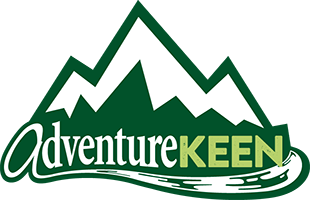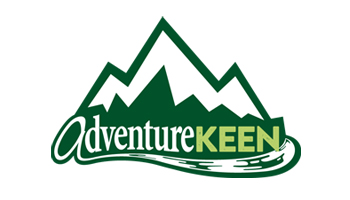
The AdventureKEEN Blog
New Guide Teaches the Essentials of Creating Fire-Resistant Properties
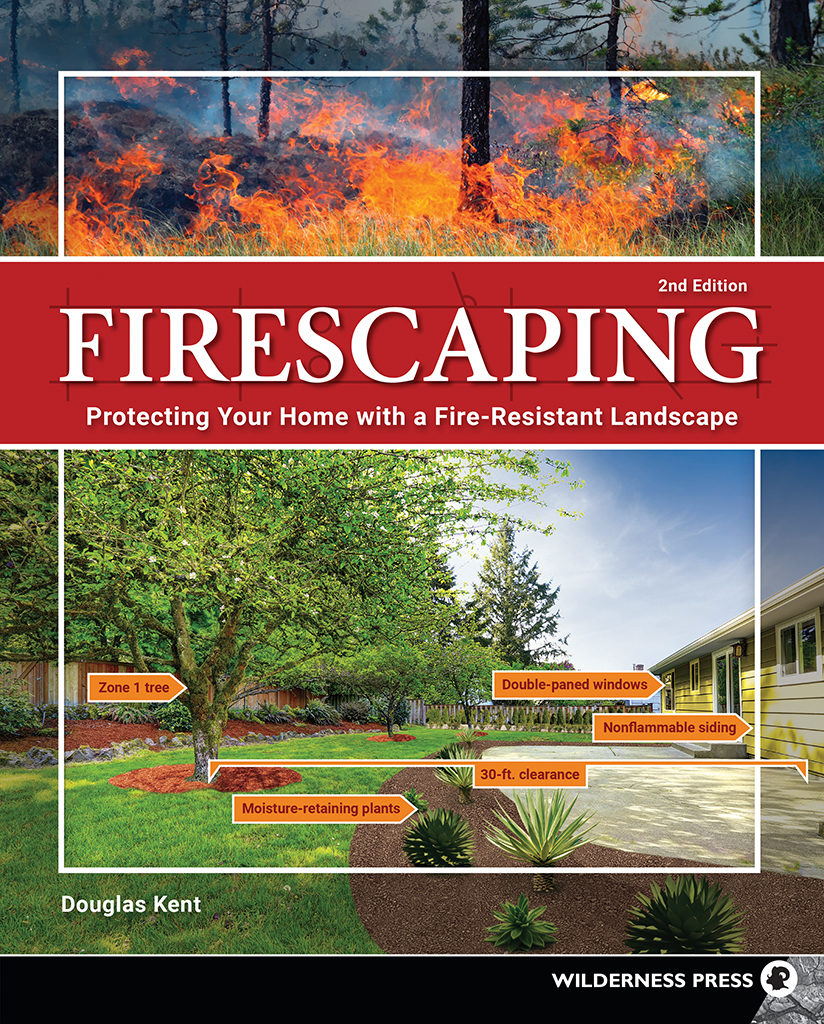
The landscape is charred and murky. The horizon is torn by jet-black, leafless trees. The surrounding shrubs have burned to ash. Chimneys and large piles of soot are all that remain of the neighborhood homes—all but one.
In the midst of the wildfire’s destructive wake, a lone house stands. Its walls are a grayish and sticky black, and the ground around it is singed. Yet the home and everything within it have been saved. Some say it’s a miracle. Others call it luck. It is neither. The property was protected by careful planning and the implementation of a strategic fire-resistant landscape. The property was saved by firescaping.
In the new edition of Firescaping (October 2019, Wilderness Press), horticultural expert Douglas Kent shares secrets, tricks, and simple instructions that can help readers’ homes survive a wildfire. The practical, full-color guide introduces design and maintenance guidelines developed by dedicated scientists and firescaping professionals. It shares actionable strategies for reducing a property’s fire hazard, a practice the author is passionate about.
“Scientists, fire professionals, and ecologists such as myself now believe the worst is still ahead,” says Douglas. “Megafires, firestorms, and fire tornados are becoming a yearly phenomenon.”
Douglas has been on the front lines of many fires. Since 2005, he has toured, worked with, and spoken to fire-scarred communities throughout California. His book is invaluable for homeowners, landscaping professionals, and community fire prevention officials across the country.
“There are more than 46 million homes representing a population of more than 100 million in high fire hazard areas in the United States,” Douglas notes. “Sixty percent of all new homes are being built in fire country.”
Firescaping provides in-depth information about the various aspects of wildfire safety. For individuals, it delves into landscaping techniques, home defense against flying embers, and recommendations for everything from plants to driveways. For neighborhoods and communities, the book discusses such important considerations as road conditions, vegetation management, and recovery efforts after a wildfire passes.

“I hope everyone—homeowners and contractors, students and advocates—uses this book as a starting point for their journey toward personal safety,” Douglas says. “We can create safety. We just need to roll up our sleeves and get to it.”
Firescaping ($21.95, paperback) is available wherever books are sold, including bookstores, gift shops, and online retailers.

About the Author
Douglas Kent’s love affair with landscaping spans decades. He is an expert in ecological land management (ELM), the practice of designing and maintaining landscapes for specific environmental outcomes, such as carbon reduction, pollinator attraction, or waterbody protection. He has taught aspects of land management at the Center for Regenerative Studies at California Polytechnic State University, Pomona, since 2008.
Douglas manages an ELM business with clients across California. The business has helped Douglas run four statewide education campaigns and participate in hundreds of landscape projects. His work has been featured in the Los Angeles Times, Fine Gardening, Sunset Magazine, and National Wildlife, as well as on HGTV and CNN Comcast. He has also written six other books on sustainable gardening practices.
Take a Family Road Trip to Wisconsin Dells
You might think the start of a new school year is less than ideal for a family road trip. At our house, that first week creates one stressed out family. So when the weekend arrives, we should lock the doors, shut off the lights, and hide under the covers. We do the opposite. We load the car with luggage, fill the tank with gas, and head out of town. Our destination of choice: Wisconsin Dells.
From our home, it’s about a five-hour trip, so we arrive at our resort of choice, the Kalahari, just in time to put the kids to bed. Saturday morning, though, is all about the resort’s famous indoor waterpark: the largest in Wisconsin—and the main attraction on this family road trip. There are slides at every turn, not to mention different play areas for all ages, including a wave pool. (For those who wish to relax, there’s a wonderful lazy river and plenty of hot tubs.)
This year, we discovered the new Underwater DIVR—the first underwater virtual reality experience in the country. It’s essentially snorkeling in a swimming pool while a VR headset shows you the depths of an ocean. I wish the footage had been more life-like, but it was a very cool experience at a surprisingly low cost.
That sounds like a lot of amazing stuff, and it is. But if the Wisconsin Dells early-September weather cooperates, we get all of that times two—because the Kalahari also has an outdoor waterpark!
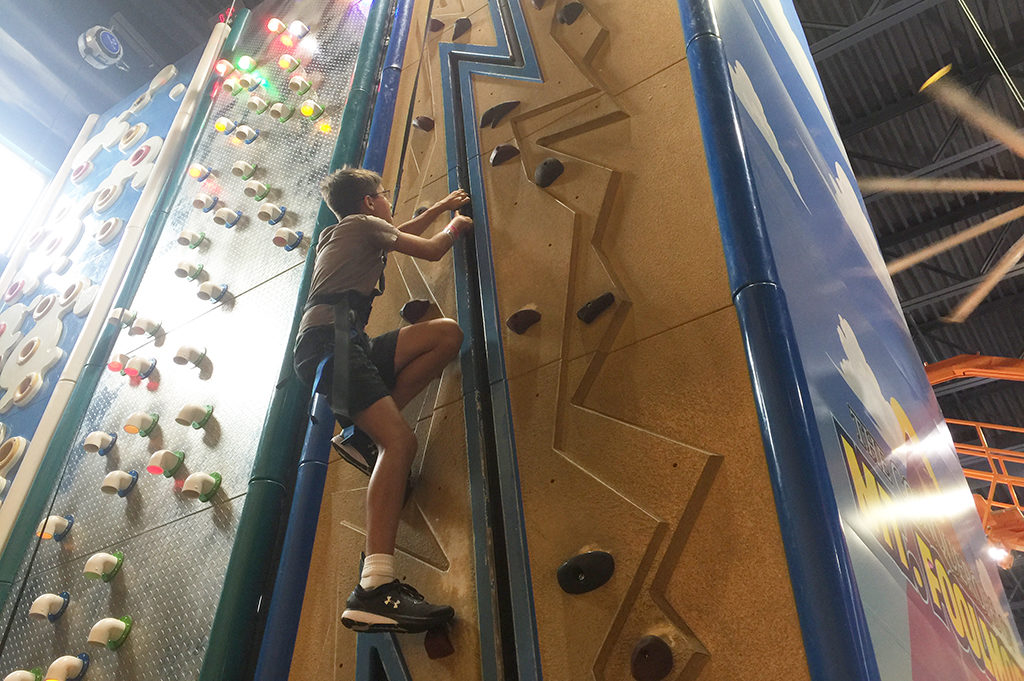
Of course, the allure of two waterparks can only distract the children for so long on our family road trip. Late afternoon and evening are all about “Tom Foolery’s Adventure Park.” The resort’s giant arcade area includes go-carts, a bowling alley, a climbing wall, and even a Ferris wheel.
We’ve found that the arcade eats money pretty fast. So instead, we now opt to buy the boys unlimited wristband passes. While a wristband doesn’t include the arcade games, it provides endless access to Wisconsin Dells fun: mini-golf, laser tag, a 3-D interactive ride/video game (our oldest boy’s favorite), a ropes course—now with a brand new zip line—and more.
For your family road trip menu, you don’t have to venture away from the resort for food, although you’ll pay a premium if you eat under their roof. To save a little money, there are some familiar restaurant options (fast food and otherwise) within walking distance. Local favorite Moosejaw Pizza & Dells Brewing Company is just a short drive away. My family prefers to travel across town to our top Wisconsin Dells eatery: Paul Bunyan’s Cook Shanty.

It’s a whirlwind trip, and we wonder every year whether we should do it again. Yet every year, we go and have the time of our lives. It’s proof that there’s never a bad time for a family road trip, and Wisconsin Dells is a perfect destination. To plan your next trip, check out Wisconsin Day Trips by Theme.
Take Part in National Read a Book Day!
The end of the work week is reason enough to celebrate, but today is also National Read a Book Day. People across the country are encouraged to shut off the television, put away the mobile devices, and curl up with a good book. (As luck would have it, today is also National Lazy Mom’s Day—perfect!) At AdventureKEEN, we are best known as an outdoor publisher of practical guides for everything from hiking to bird watching. But we also have a tremendous selection of books perfect for a quiet evening at home.

If you enjoy the mystery/thriller genre, Wolves by award-winning author Cary J. Griffith is the title for you. A wildlife biologist and special agent for the U.S. Fish & Wildlife Service returns to his hometown to investigate the mysterious death of his estranged father. Griffith spins an incredible story of suspense, worthy of National Read a Book Day.

For those who enjoy a little more horror in their thrillers, Shadows in the Asylum by D.A. Stern is an unexpected find from an outdoor publisher. It’s akin to a “found footage” film (a la The Blair Witch Project) in book form. The novel collects letters, notes, and other correspondences within the Kriegmoor Psychiatric Institute that blend into a bizarre story of insanity and blur the line between fact and fiction.

On the lighter side, humor fans will appreciate Ole & Lena: A Stud and a Hot Dish by Bruce Danielson and Ann Berg. This collection of jokes and photographs finds Ole and Lena getting mixed up about everything from winter activities to distant relatives. To fill your National Read a Book Day with laughs, this option is nothing short of hilarious!
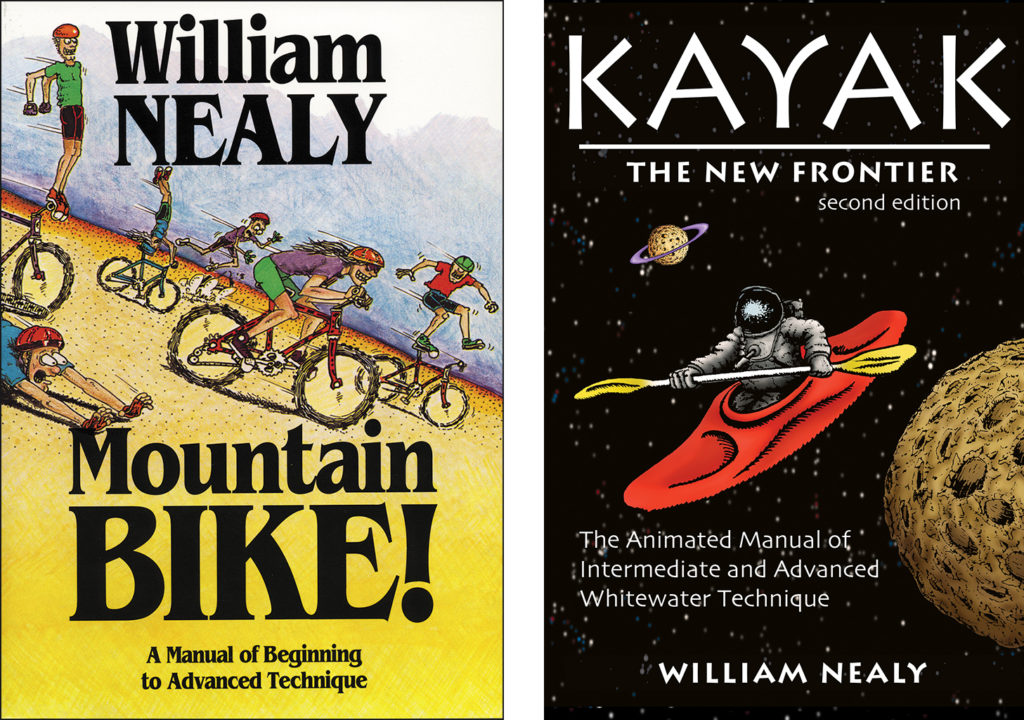
As an outdoor publisher, we have plenty of titles about cycling and paddling, including Mountain Bike! and Kayak: The New Frontier. William Nealy’s cartoon illustrations intertwine insight with humor and knowledge with humiliation. Along the way, his content shortens the learning curve and allows readers to master advanced techniques in the two outdoor pursuits. The books are part comedy and part “how to” guides.
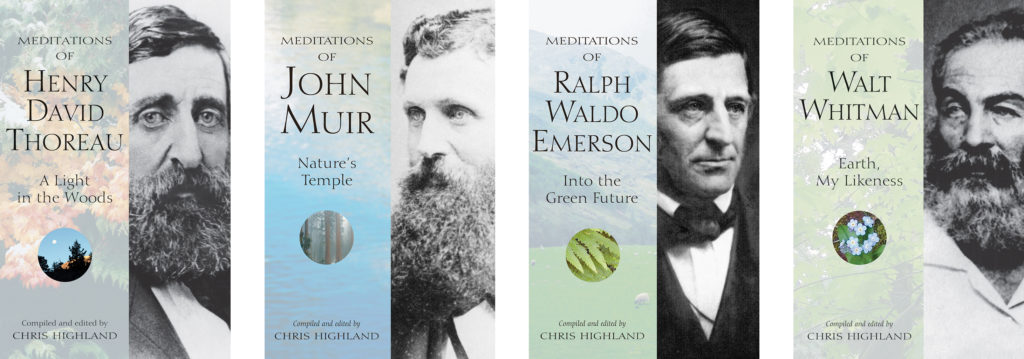
Of course, many readers might prefer more serious and contemplative reading on National Read a Book Day—like the popular Meditations series. Each book presents a vast selection of inspirational quotes and essays, along with spiritual texts, from celebrated thinkers. Available titles from this outdoor publisher include Meditations of Henry David Thoreau, Meditations of John Muir, Meditations of Ralph Waldo Emerson, and Meditations of Walt Whitman.
With these great options and so many more, you’re bound to find something you love at AdventureKEEN. So read alone, read to your children, or read to your pets—it doesn’t matter what you read or how you read it. The point of National Read a Book Day is to make time to enjoy a book. I intend to do just that, and I hope you choose to do the same.
Regional Guidebooks Are Perfect College Gift Ideas
It’s always a good time for college gift ideas, right? Chances are pretty good that you know someone who’s heading off to further their education—perhaps even your own child. Whether they are staying close to home or have chosen far-off places to travel, two things are certain: They love to know that you’re thinking of them, and they love to get mail. Give them a little first-semester boost; send them a gift. You don’t have to spend a fortune to impress them, either. A guidebook to their area is both thoughtful and functional, and it’s something they’re sure to appreciate.
Especially for students who are new to a given location, a guidebook ranks among the best college gift ideas. It introduces them to their surroundings and gives them some ideas for things to do that are fun and inexpensive. For example, a student who chose places to travel and/or attend like the University of Minnesota might appreciate getting a copy of Walking Twin Cities by Holly Day and Sherman Wick.

The handy book introduces 35 self-guided tours through parks, historic neighborhoods, and other popular locales in Minneapolis and Saint Paul. Each selected tour includes a detailed walk description, full-color photographs, a map, and tips on popular cafes, restaurants, and hot spots. With literally hundreds of points of interest to be seen in the Twin Cities, students will quickly become acquainted with what the area has to offer.
Along with the Walking series, other great college gift ideas include 60 Hikes Within 60 Miles and Five-Star Trails. For students with more specialized interests, you might try something like Best Tent Camping or even the Ghosthunting series of books.
College students who have lived in their area for more than a couple of years might be looking to expand their explorations. In that case, a book from the Day Trips series might be a perfect choice. A student at the University of North Carolina might find North Carolina Day Trips by Theme by Marla Hardee Milling to be extremely useful.
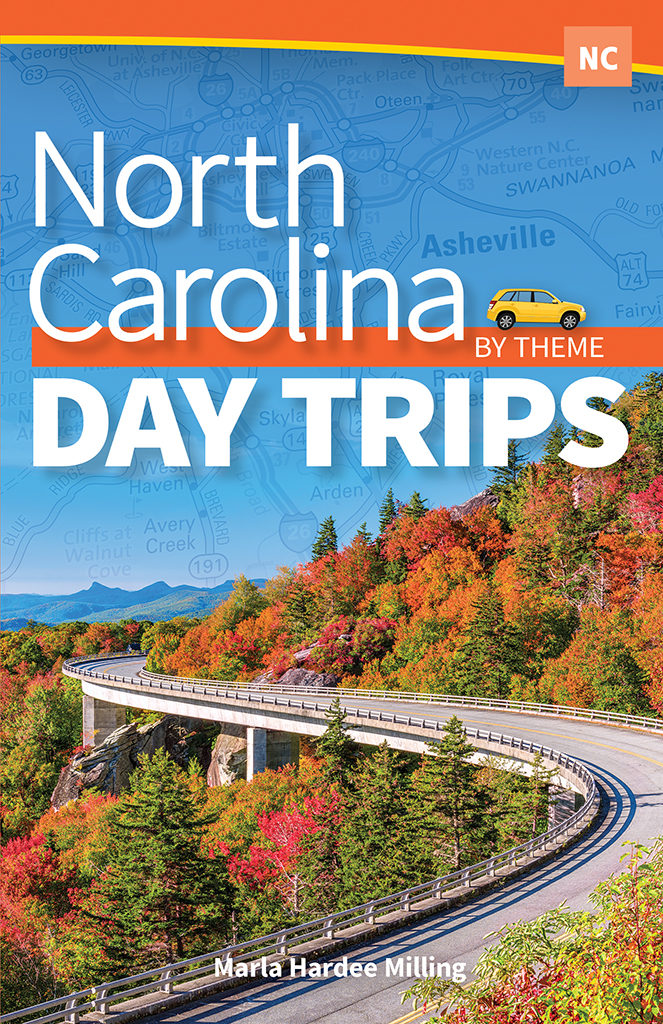
The guidebook presents hundreds of the state’s most entertaining places to travel—not a bad feature in this best of college gift ideas. Destinations in the book are organized by themes, such as Lighthouses, Festivals, Outdoor Adventures, and Natural Wonders, so readers can decide what to do and then figure out where to do it. It’s a great way to uncover the many state parks, museums, beaches, foodie delights, and more that can be found throughout the Tar Heel State.
Other regional series that veteran college students might enjoy are the Adventure Journey Guides, Adventure Weekends, Backpacking by State, and Rail-Trails.
Whether your college kid is an avid camper, cyclist, or kayaker, whether they love ghosthunting or hunting for new places to travel, AdventureKEEN has college gift ideas for them. Send a guidebook today, and let them know that out of sight is definitely not out of mind.
In The Mountains: Chasing That Rocky Mountain High
Highway 34 roughly follows the Big Thompson River from Fort Collins to Estes Park. We enjoyed this beautiful drive and finally found a nice spot to pull off next to the river. I wanted to go wading but remembered the power of rivers whose source is snowmelt from surrounding mountains. I reconsidered and decided it would be embarrassing to be washed away by a river I didn’t even need to cross.
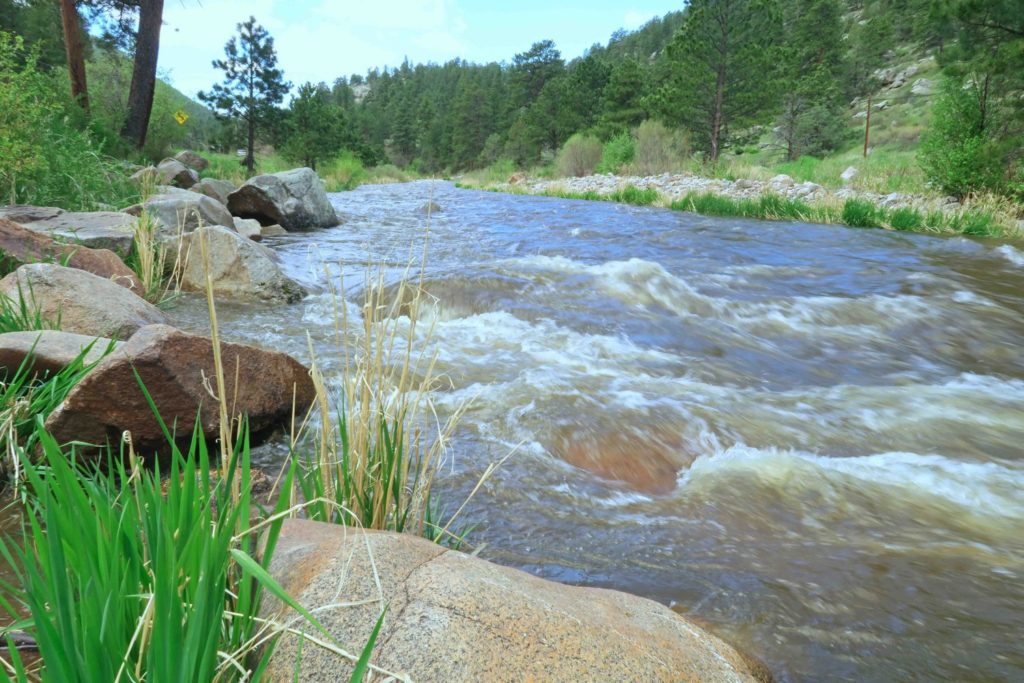
Estes Park is always a busy place in the summer. We wanted to explore downtown, but finding a parking spot would be challenging. We decided to pick up a few snacks at a grocery store and didn’t feel guilty walking to town when we left the store.
We’re naturally attracted to independent stores, so Macdonald Bookshop was a treat. It opened in the Macdonald’s living room in 1928 and was operated by Jessica Macdonald until 1957. Paula Steige, a third-generation Macdonald, is the current owner.
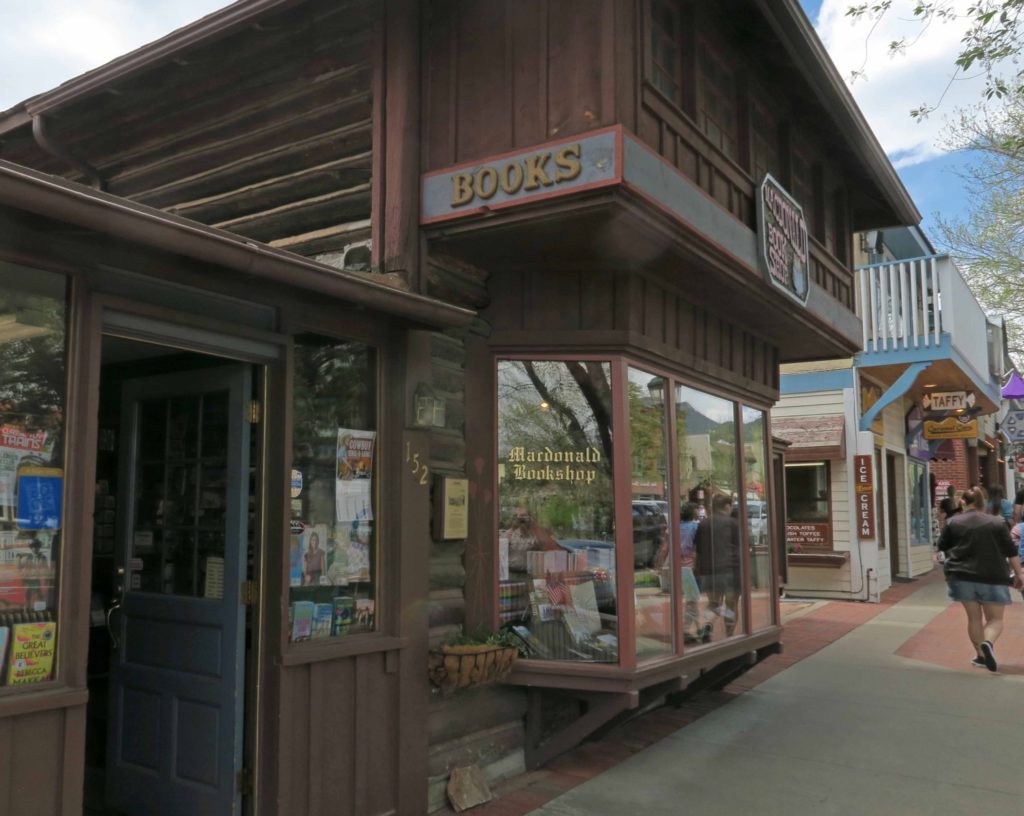
I wanted to revisit a restaurant from a backpacking trip, so we stopped into Poppy’s Pizza & Grill for a light lunch. So good, we returned to the same place for dinner.
One of our favorite stores carried custom games and puzzles. The owner was very entertaining, and his wife was a teacher like us, so we had some interesting conversations.
We made two drives with some day hiking into Rocky Mountain National Park. Trail Ridge Road is a drive best done in the morning before the threat of thunderstorms becomes an issue. Both trips through were beautiful. On the second morning out, we were surprised that temperatures dipped down to 24 degrees.
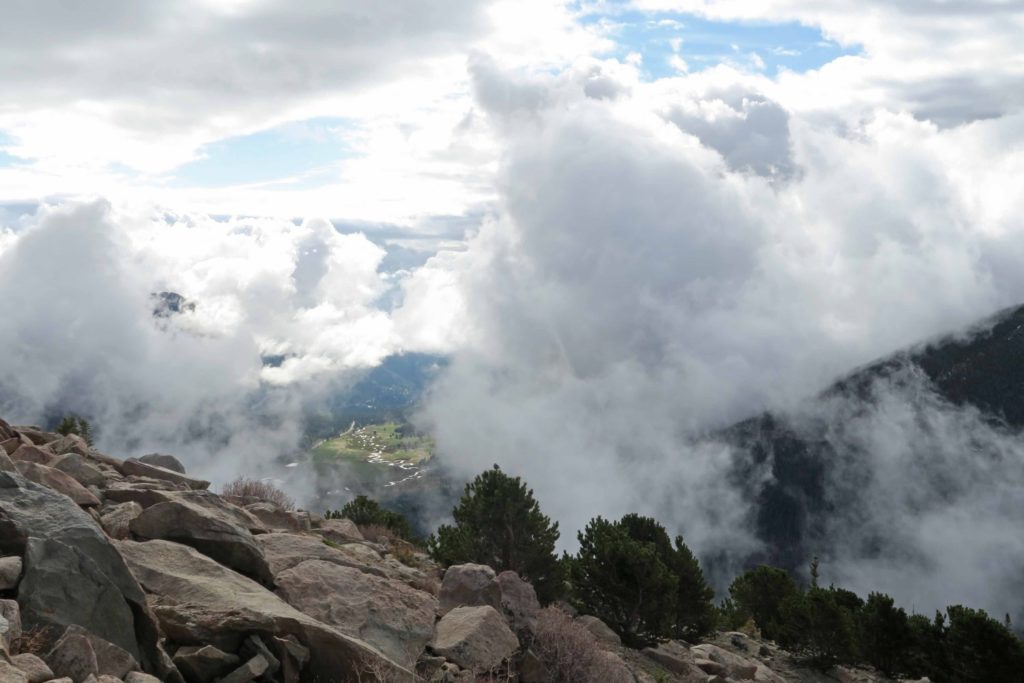
We noticed this Steller’s Jay on a stop early in the drive while still at lower elevations. We kept scanning the scenes for wildlife, but the only elk we saw were in downtown Estes Park.

Amazing what a few hundred feet can mean! We enjoyed driving up through changing habitats and then above the tree line where snow was slowly melting.
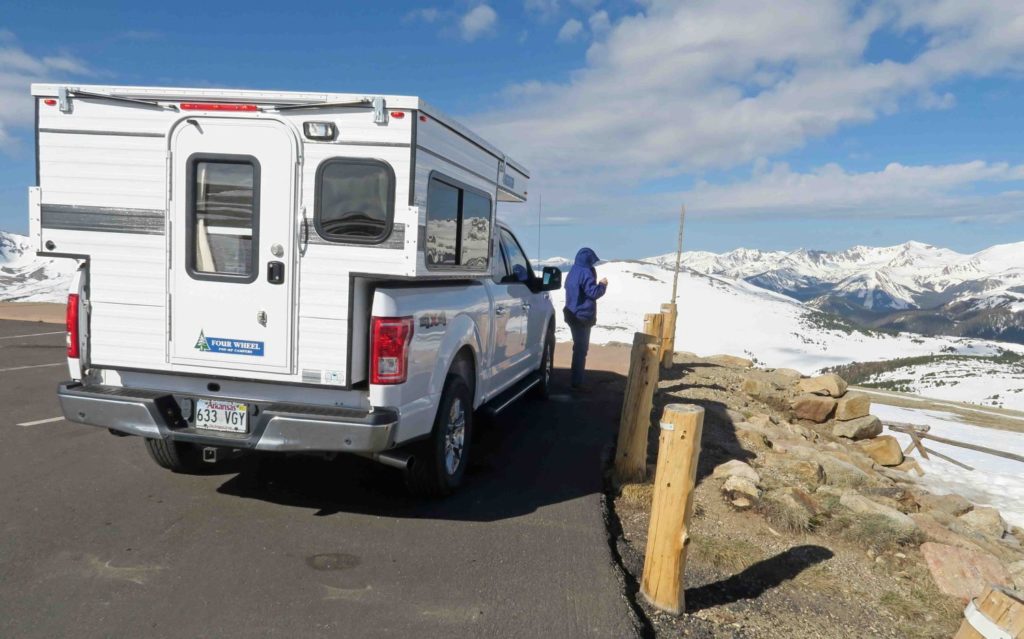
The Alpine Visitor Center (elevation 11,796 feet) was still closed when we were there in early July. Becca was a good sport and posed in front of the snowdrift showing part of the roof, reinforced with large timbers to withstand the high elevation conditions.
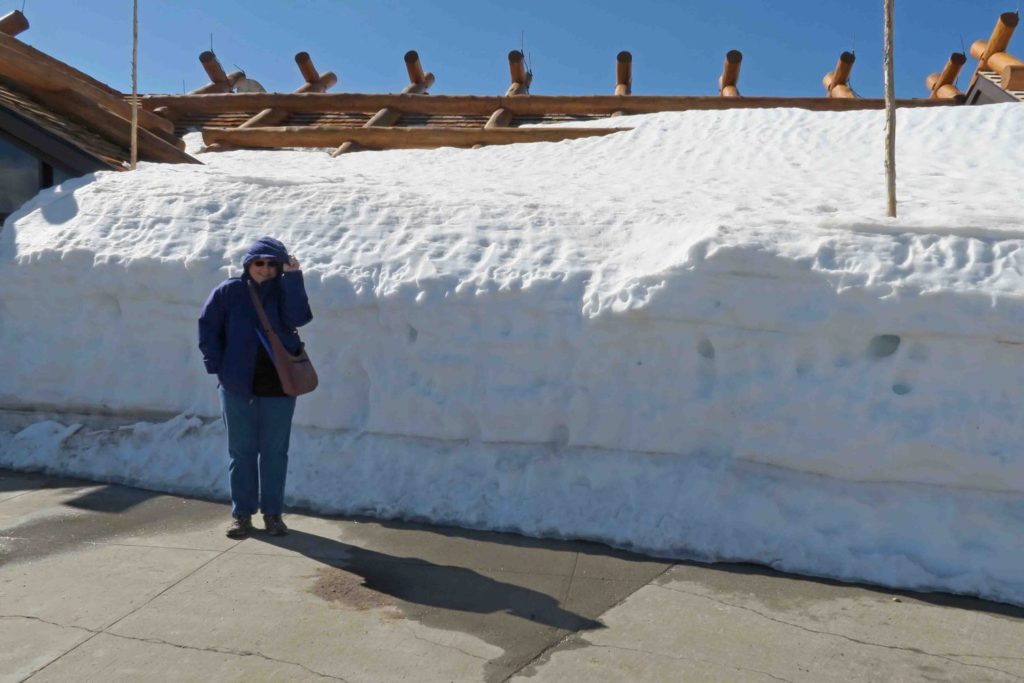
This was a favorite photo taken close to Trail Ridge Road as we returned from an overlook and short visit with marmots. These little guys are built for the winter conditions. Don’t leave you pack sitting around unattended though. I’ve seen them make off with trail snacks. They’re bold.
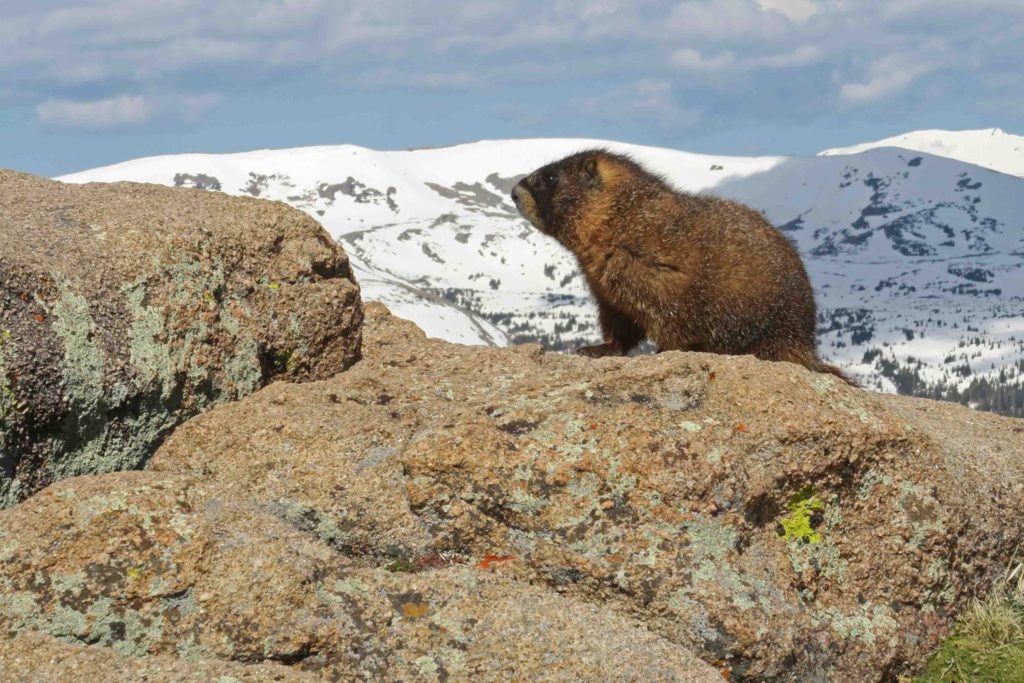
After a stop at the Continental divide, we descended into the Grand Lake area. It’s usually less crowded than Estes Park. The Visitor Center with its hiking trail is a great stop. I was pleased to see a Menasha Ridge Press guidebook and added a copy to my collection for future planning. Kim Lipker is a prolific author, and this is a great little book. I now have a new contact for information about trail conditions in the Rocky Mountain region.
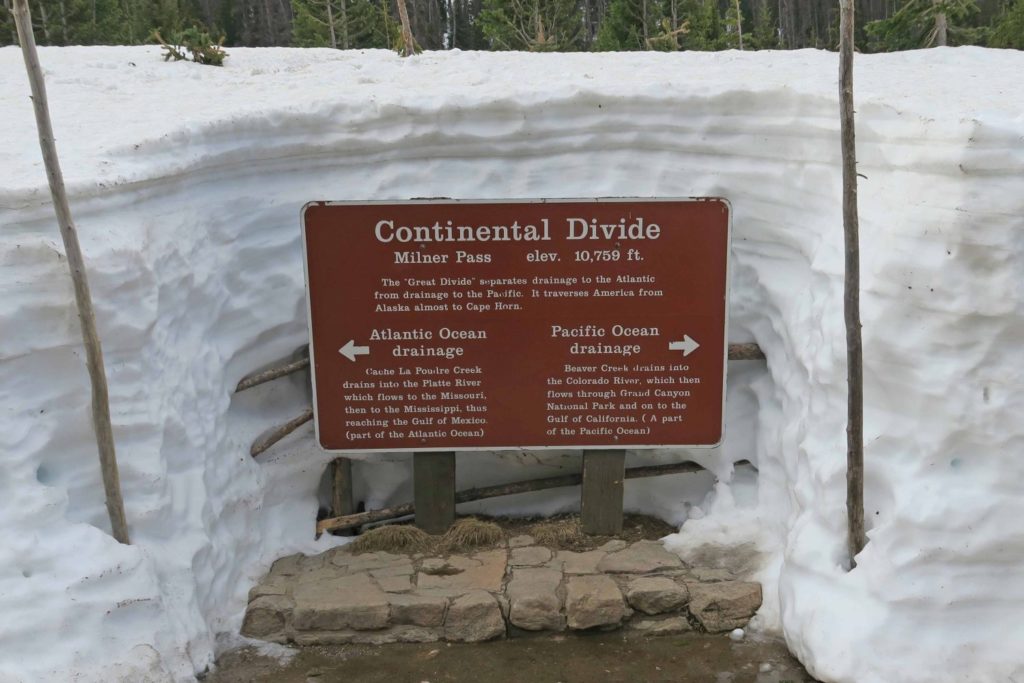
One of the great benefits from authoring Five Star Trails: The Ozarks has been making contact with other authors. Great resources for future travels!
We enjoyed the trail that begins at the Grand Lake Visitors Center parking lot. I’m pretty sure this is where Becca made the unauthorized collection of wildlife. I teased her about the importance of leaving things in the woods, especially when visiting a national park. She was pleased when I removed the Rocky Mountain Tick, her souvenir from our hike. It’s important to remove ticks as early as possible in case they’re carrying any tickborne diseases. Reading the list of possibilities will give you the heebie-jeebies.
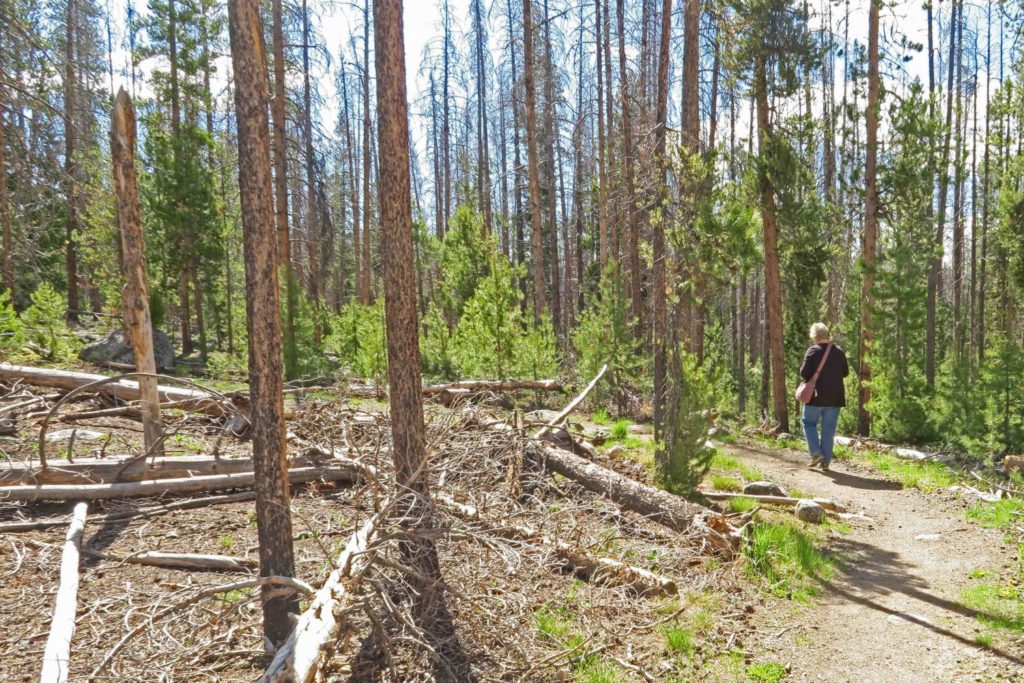
On this trip out west, we repeatedly felt the desire to explore more deeply and spend more time in every location. One of the best indicators of a trip is that it leaves you wanting more. This trip definitely did that for us. We’ll be back!
The post In The Mountains: Chasing That Rocky Mountain High appeared first on Menasha Ridge Press Blog.
Hello, Bozeman: Chasing That Rocky Mountain High
The second part of our travels took us to Bozeman, Montana. We loved the low humidity and morning temperatures were glorious.
Based on a recommendation, we stay at the Lewis & Clark Motel right on Main Street in Bozeman. It was being remodeled, but the rooms were comfortable, and we liked the location.
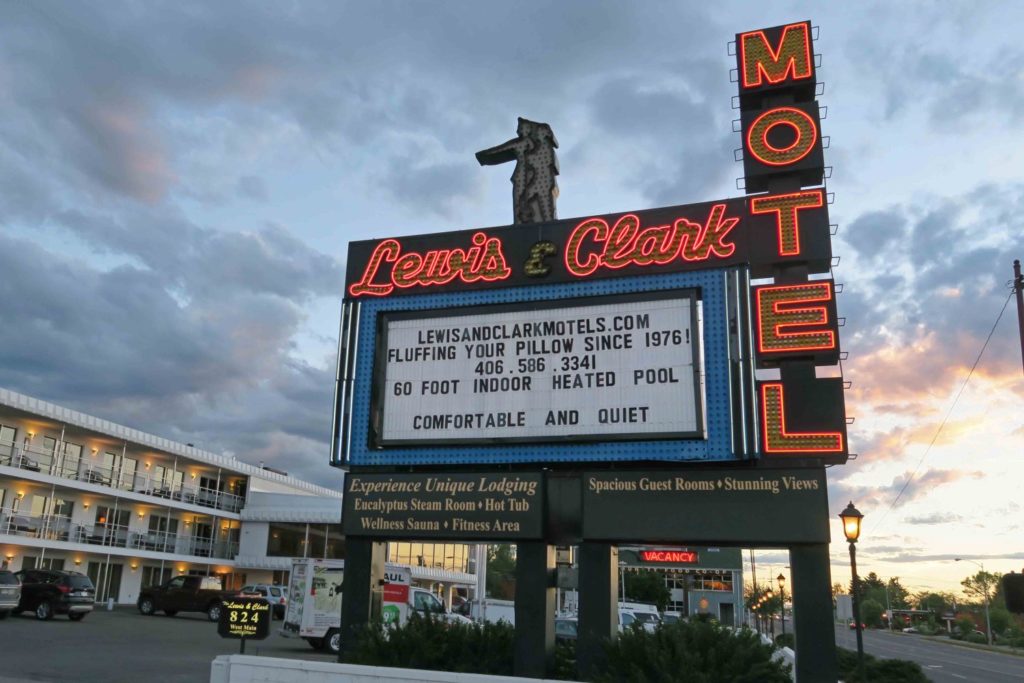
We wished for more time to explore downtown but enjoyed visiting a couple of indie bookstores. The Country Bookshelf was awesome. It was established in 1957 and was the type of store you could easily get lost in for hours. Vargo’s Jazz City and Books was also a fun store to visit.

I found a collection of short stories by Edward Abbey titled One Life at a Time, Please. The title alone is worth the book’s purchase price!
Becca and I had a nice meal and made a souvenir of the glass coaster that included good advice for cowboys or anyone drinking from a creek.
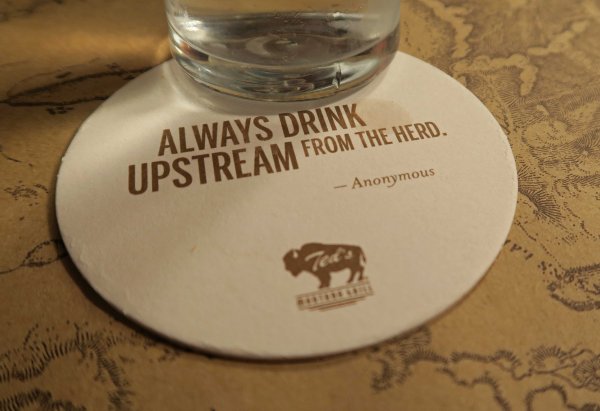
We then enjoyed some Sweet Peaks Handcrafted Ice Cream before returning to the motel.
I learned of the Drinking Horse Trail on the edge of Bozeman close to a fish hatchery. It climbed part of Drinking Horse Mountain and rewarded me with a view of downtown Bozeman and the surrounding countryside.
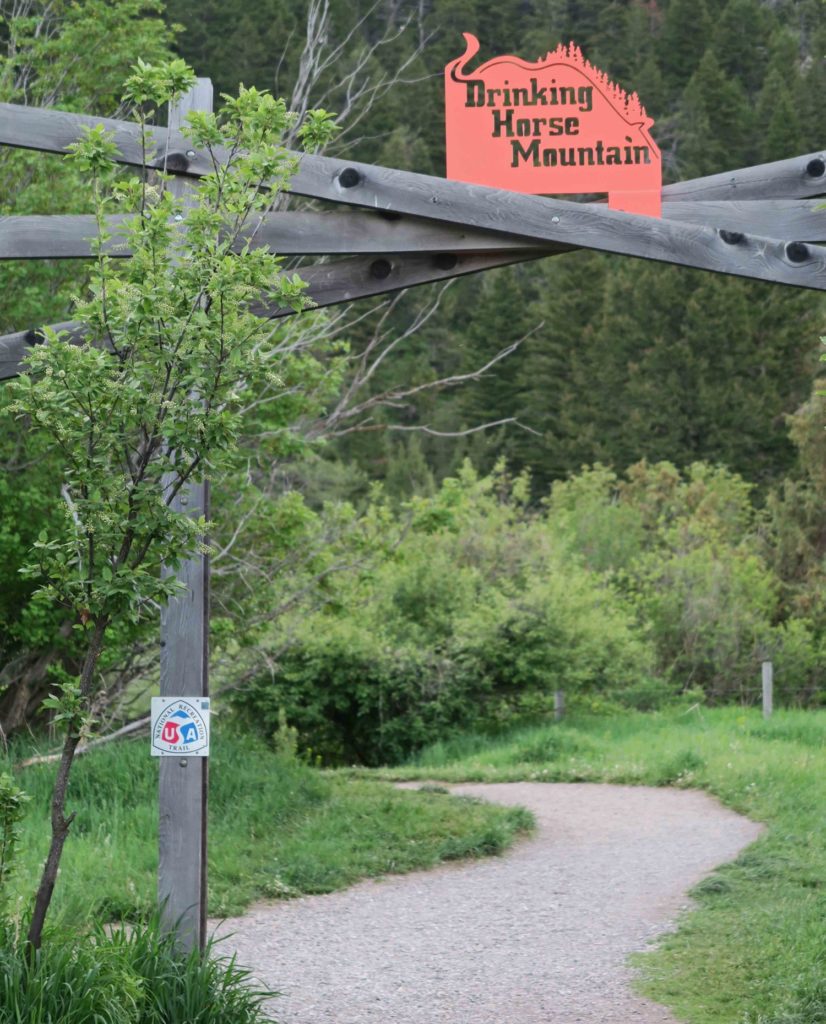
Arrowleaf Balsamroot were blooming, and temperatures rose quickly with the sun, but low humidity was a welcome feeling for this Arkansas hiker. I liked this trail so much I did it two mornings in a row rather than spending time driving to trails farther away.
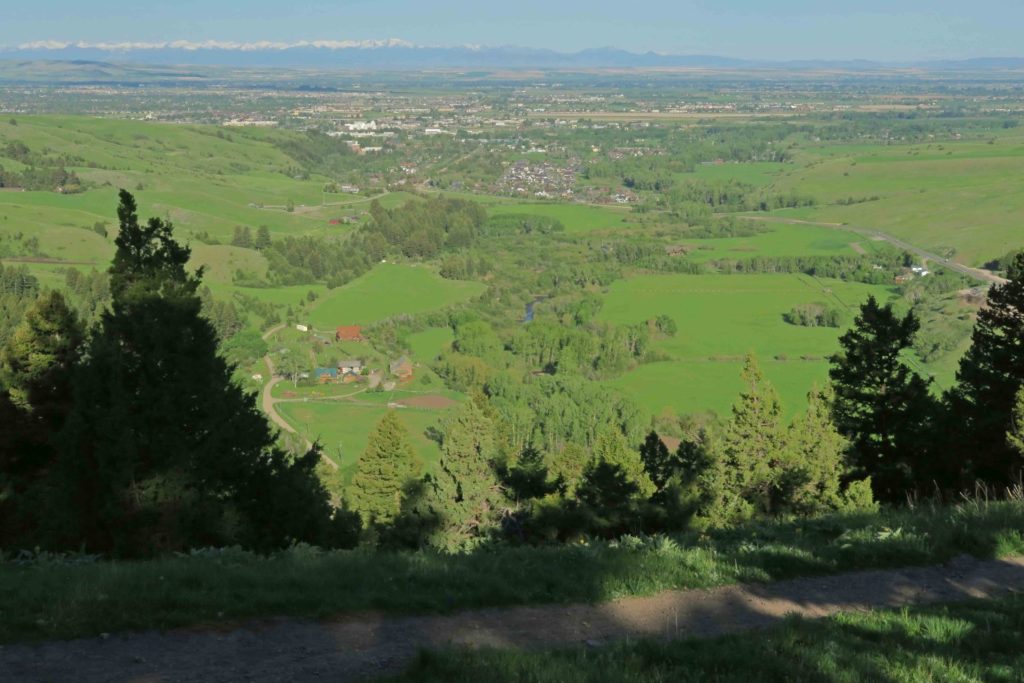
Part of the motivation for our out-west trip was to pick up a truck pop-up camper I’d ordered. By picking it up, we saved the delivery and installation charges. I also had the chance to see several other models of campers while waiting for the installation.
I was sure I’d like the Four Wheel Pop-Up Camper shell, but it exceeded my expectations and is getting frequent use. It’s easy to haul, lightweight, and perfectly functional without a lot of bells and whistles. Of course, you can fill it up with lots of extras, adding weight and cost, but I like the simple design of their shell model.
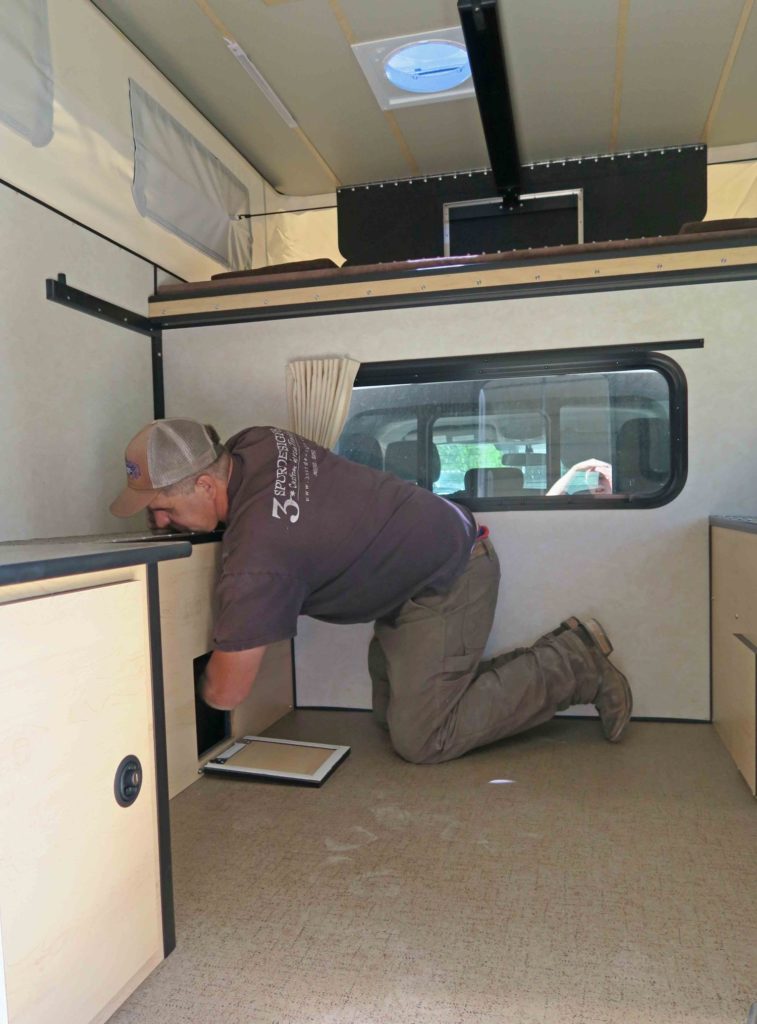
We hated to leave Bozeman, but it was time to head toward the Rocky Mountain National Park. I’ll share that part of our trip in another post.
The post Hello, Bozeman: Chasing That Rocky Mountain High appeared first on Menasha Ridge Press Blog.
